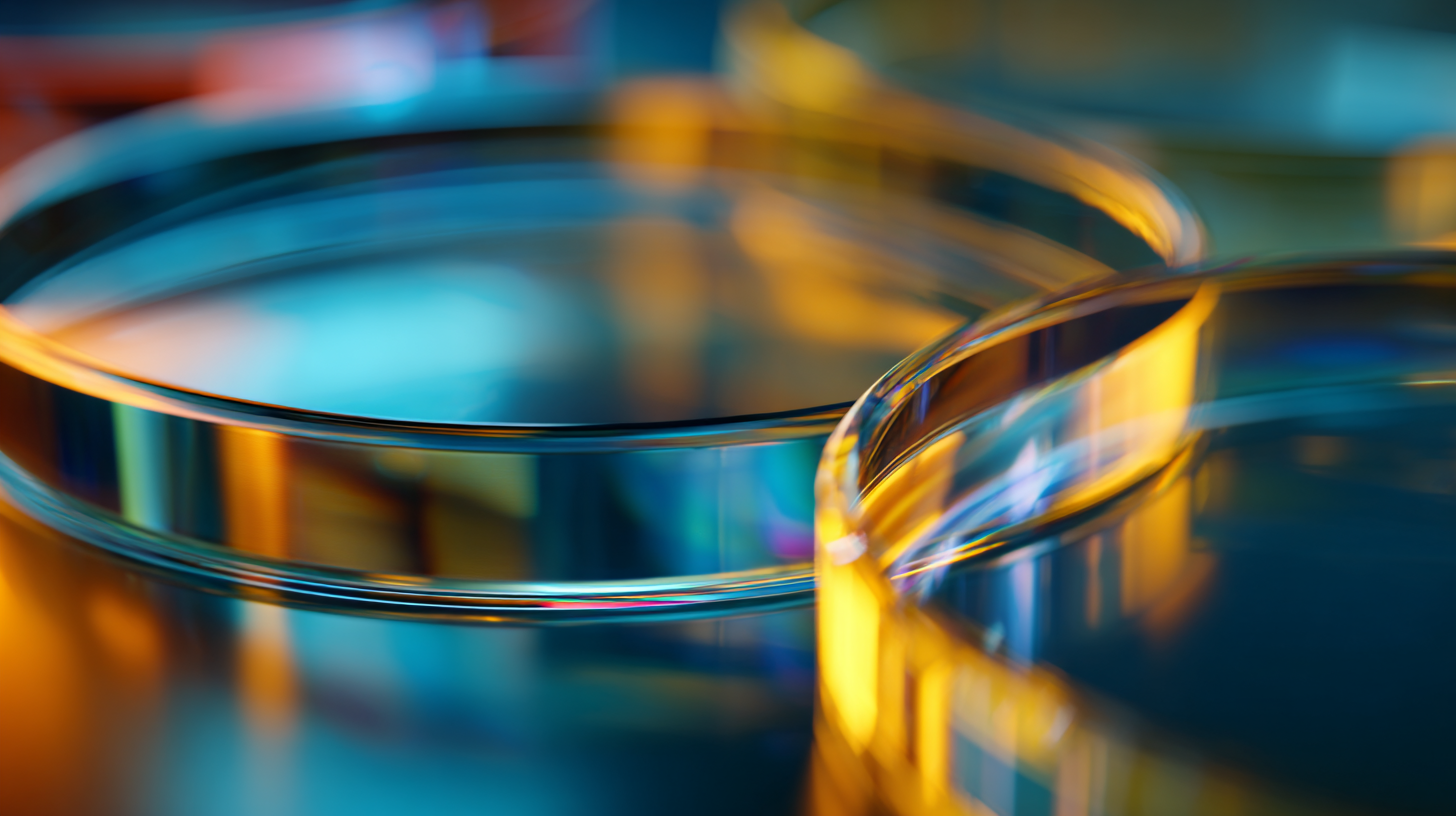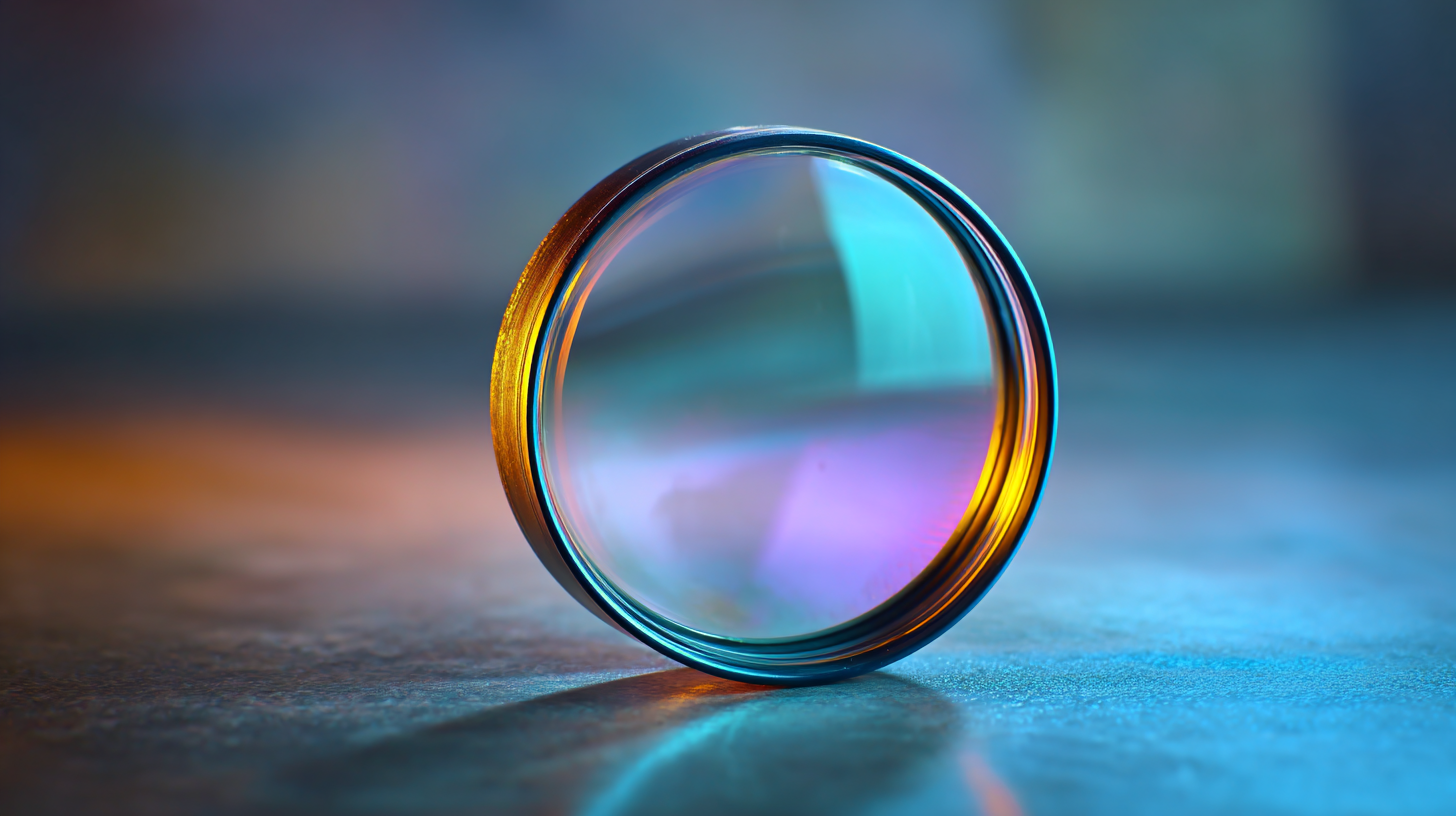
As we delve into the intricate world of optics, the significance of glass lenses cannot be overstated. These optical wonders have been pivotal in the development of both vision correction and photography techniques. According to a report by the Optical Society of America, over 2.7 billion people worldwide rely on prescription eyewear, with glass lenses being a popular choice due to their superior clarity and durability.
 Furthermore, in the realm of photography, studies indicate that approximately 90% of professional photographers prefer using camera lenses made from high-quality glass, attributing their stunning image results to the lens's ability to minimize distortion and enhance light transmission.
In this article, we explore the scientific principles underlying glass lenses and their profound impact on our daily visual experiences and artistic expressions, illustrating why they remain an essential component in both vision and photography.
Furthermore, in the realm of photography, studies indicate that approximately 90% of professional photographers prefer using camera lenses made from high-quality glass, attributing their stunning image results to the lens's ability to minimize distortion and enhance light transmission.
In this article, we explore the scientific principles underlying glass lenses and their profound impact on our daily visual experiences and artistic expressions, illustrating why they remain an essential component in both vision and photography.
Light refraction is a fundamental principle that governs the functioning of glass lenses, significantly impacting both vision and photography. When light passes through a lens, it changes direction due to varying speeds in different media. This bending of light occurs because glass has a higher refractive index than air. Understanding how light bends as it enters and exits the lens is crucial for achieving clear and focused images, whether in glasses, cameras, or other optical devices.
The design of glass lenses relies heavily on the geometry of curvature and material properties to manipulate light effectively. Convex lenses, for example, converge light rays to a point, enhancing vision for those who are farsighted. Conversely, concave lenses spread light rays apart, aiding those who are nearsighted. In photography, the arrangement and shape of lenses contribute to focusing light accurately onto the sensor, affecting depth of field and clarity. By mastering the nuances of light refraction, we can harness its power to improve our visual experience and capture stunning images in photography.

When exploring the different types of glass lenses, it’s essential to recognize the diverse applications they serve in both vision correction and photography. For instance, prescription lenses, made from high-quality optical glass, provide essential visual acuity for millions around the world. According to the Vision Council, approximately 75% of adults require some form of vision correction, demonstrating the critical role that optical lenses play in day-to-day life. These lenses are designed to address various refractive errors, including myopia, hyperopia, and astigmatism, contributing substantially to overall visual health.
In photography, glass lenses are equally crucial. From prime lenses to wide-angle and telephoto, the right glass can significantly alter the outcome of an image. A report from Grand View Research indicates that the global camera lens market is projected to reach USD 20 billion by 2025, highlighting the rising demand for quality optics. High-end glass lenses minimize distortion and enhance clarity, ensuring that photographers capture images with rich detail and vibrant colors. Each type of lens is engineered with specific glass compositions to optimize light transmission and reduce optical aberrations, ultimately allowing for extraordinary photographic artistry.
The advancements in lens coatings have revolutionized both vision correction and photographic technology, playing a crucial role in enhancing lens performance and durability. According to a report by Market Research Future, the global optical coating market is projected to reach approximately $7.2 billion by 2025, with anti-reflective coatings leading the demand due to their significant impact on light transmission and image clarity. These coatings reduce glare and reflections, allowing for a more accurate depiction of colors and details, essential for photographers and individuals using corrective lenses.
Moreover, protective coatings contribute to the longevity of lenses by imparting scratch resistance and water repellency. The Vision Council states that nearly 80% of individuals experience glare during daily activities, emphasizing the necessity of specialized coatings to improve vision comfort and safety. Furthermore, advancements in hydrophobic coatings ensure that lenses remain clear in various conditions, significantly enhancing user experience. By understanding the science behind these advanced coatings, consumers can make informed choices, optimizing their visual experience and photographic results.
 The curvature of glass lenses plays a pivotal role in both vision correction and image quality in photography. According to a report by the Optometry Association, nearly 75% of adults in the U.S. require some form of vision correction, with lens curvature significantly impacting the effectiveness of eyeglasses and contact lenses. Curved lenses work by bending light to ensure it correctly focuses on the retina, allowing for clearer vision. Various prescriptions dictate specific curvatures, tailored to individual refractive errors such as myopia or hyperopia, demonstrating how vital precise curvature is for optimal visual acuity.
The curvature of glass lenses plays a pivotal role in both vision correction and image quality in photography. According to a report by the Optometry Association, nearly 75% of adults in the U.S. require some form of vision correction, with lens curvature significantly impacting the effectiveness of eyeglasses and contact lenses. Curved lenses work by bending light to ensure it correctly focuses on the retina, allowing for clearer vision. Various prescriptions dictate specific curvatures, tailored to individual refractive errors such as myopia or hyperopia, demonstrating how vital precise curvature is for optimal visual acuity.
In photography, lens curvature also dictates the sharpness and clarity of an image. A study published in the Journal of Optical Engineering highlights that lenses with improved curvature designs, such as aspheric lenses, can reduce spherical aberrations and significantly enhance image quality. This advancement results in photographs that are sharper across the entire frame, rather than being limited to a small central area. As photographers strive for high-quality imagery, understanding the science behind lens curvature can lead to more informed choices when selecting equipment, ultimately enhancing creativity and expression through their work.
Advancements in glass technology have played a pivotal role in revolutionizing modern photography techniques. High-quality glass lenses are essential for capturing sharp, vibrant images, and innovations such as aspherical lens designs, ultra-low dispersion glass, and multi-coating technologies have significantly enhanced optical performance. These improvements minimize aberrations and reflections, allowing photographers to achieve greater clarity and color accuracy in their work.
Moreover, the introduction of specialized glass types, such as fluorite and HD glass, has opened new doors for photographers, enabling them to shoot in diverse lighting conditions while maintaining high image quality. Technologies such as lens stabilization and advanced autofocus systems further demonstrate how glass design directly impacts the way we capture moments. As glass technology continues to evolve, photographers can expect even more precise and versatile lenses, enriching their creative expression and enhancing the art of photography.
This chart illustrates the advancements in glass lens technology and their influence on various aspects of vision and photography over the last two decades. The data reflects the percentage improvement in clarity, color accuracy, and light transmission for common lens types.





